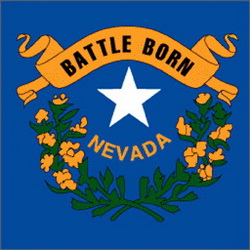 The Twentieth Century – Prelude to the New Gambling Era
The Twentieth Century – Prelude to the New Gambling Era
While California was establishing itself as the Golden State, Nevada was sinking constantly into disrepute. In that disrepute, however, Nevada found the final solution to its economic conundrum – Nevada found wide-open mass-marketed casino gambling. Before that discovery in the 1940s and 1950s, the state had built in its style of political power. During the Progressive era and through the 1920s, 1930s, and 1940s, the state had essentially abolished a notion of competitive two-party politics. As alluded to earlier, George Wingfield was the “boss” of both parties early in the century. Wingfield’s office was in room 201 of the Reno National Bank Building, and that room was considered the “real capital of Nevada”. Wingfield was the head of the state Republican party. Anyone who wished to speak to the head of the Democratic party did not have to seek out a different address, however. The party chairman was in the same office – he was Wingfield’s junior law partner. They shared the same telephone number, 4111. The bipartisan Wingfield machine purposely sought to send one Democrat and one Republican senator to Washington.
This pattern allowed the state to have two members on the same committee in the Senate – the committee of choice was the one with power over mining issues. The pattern also allowed the state to have a Senate delegation with considerable seniority. Two “key” Democrats gained control of important committees where they could trade favors and votes in manners that could benefit the state in different ways. The incurable alcoholic Key Pittman became the chair of the Senate’s Foreign Relations Committee during Pres. Franklin D. Roosevelt’s difficult years prior to World War II. Pittman’s considerable embarrassments were overlooked; he died in 1940 before he could ruin U.S. international relations during the war years. Toward the middle decades, Wingfield’s role was absorbed by the jingoist senator Patrick McCarran (for whom, ironically, the Las Vegas McCarran International Airport was named). Senator McCarran used his seniority to join hands with U.S. senator Joseph McCarthy (R-WI) in his witch-hunts against real and imagined communists. He sponsored very restrictive immigration legislation as well. McCarran was a force in putting boundaries around the anticasino work of Sen. Estes Kefauver of Tennessee. And both McCarran and Pittman managed to get considerable “pork” for the state in the form of military facilities as well as that plum of all plums – the Nevada Test Site, the facility for atmospheric atomic bomb testing. Fortunately (for Nevadans), most “downwinders” lived in Utah.
State leaders measured their performance in political office in very mundane terms, and most were judged on their personalities. Although individual leaders were permitted to pursue progressive or populist causes on a wide range of issues, they pursued one general protection on all essential issues: They did what was necessary to guarantee that the state’s primary industry was protected. There were no noticeable differences in defending gambling policies whether the governor was civil libertarian Grant Sawyer, arch conservative Paul Laxalt, education reformer and labor advocate Mike O’Callahan, Republicans Bob List or Kenny Guinn, or Democrats Richard Bryan or Bob Miller. The public showed a great willingness to elect to the Senate extreme conservatives such as Laxalt and Chic Hecht (who called Jesse Helms “my liberal friend”), or liberal activists such as Harry Reid and Howard Cannon. All were “free” to pursue any national policies they wished to pursue. They had to be united, however, on defending gambling and on funding state military projects, including nuclear testing. More recently they have had to staunchly oppose the storage of nuclear waste in the state.